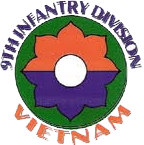Guerrilla war n, • an irregular war, usually favoring some political or philosophical objective, fought by small groups of combatants against an established or occupying power. A Spanish language term, essentially meaning “small war.” Terrorism is a tactic.
Recently U.S. Army General John Abizaid, the new head of U.S. Central Command, said forces under his command face a “classical guerrilla-type war situation”. His description is apt although one can debate whether there is a classic form of this kind of war. The history of using unconventional tactics and the complementary tools of deception, surprise, ruthlessness and uncompromising violence are as old as warfare. Indeed, the only aspect of this developing condition in Iraq that may be new is the fact that technologies are available now that may change the conduct of such warfare. The nature of it has remained the same.
The history of warfare is replete with examples of the enemy within, hidden in the mass of people, using the most treacherous of means, opposing the central authorities. The descriptions vary from one place to another but the similarities are always there: an absence of obvious form, secrecy, some claim to an appeal to the common person, agility, no rules, and utter contempt for the enemy. Any weapon will do. Opportunity guides action, and the target is the will of the opponent. Break the opponent’s will to sustain the fight, the guerrilla believes, and you may lose a thousand battles but gain victory in the end. This is the essence of this kind of war.
In its basic form, guerrilla war includes the idea embodied in the phrases from The Art of Poetry on a New Plan (1761). Vol. ii. p. 147, by Oliver Goldsmith, (1730?–1774). “For he who fights and runs away, May live to fight another day; But he who is in battle slain, Can never rise and fight again.” The short modern version of this idea is more assertive: Fight! Run Away. Live To Fight Again Another Day. The underlying idea is clear. If you stand and fight against a superior enemy, on their terms using their rules, you may lose your life and you may fail. Thus the imperative for the guerrilla is to oppose their enemy with selective and circumstantial violence that will affect the target and the supporting base, including the political and cultural resolve that sustains the opponent. At the same time the guerrilla’s hope is to retain some measure of capability through guile and cunning and the application of tactics that protect the core of their ability to continue.
There have been many approaches to fighting guerrilla war, often dependent on the peculiar set of conditions that exist at the time and place the warfare is conducted. Virtually every guerrilla war has a few consistent features: The importance of language and culture to the success of all sides, the zealotry and resolve of those who participate, and the necessity of support from the indigenous population. Defensive tactics, techniques and methods are certainly important to better protect the force. The guerrilla often relies on compartmentation of small groups and exceptional secrecy to ensure their survival, while the counter-guerrilla force is frequently forced into a defensive-reactive posture that constrains what they are able or willing to do.
However, most soldiers who have engaged in counter-guerrilla warfare believe that an effective strategy cannot be based merely on defensive measures but rather must be tied to an aggressive offensive approach, taking the war to the guerrilla, denying them sanctuary and interdicting their support, stopping their ability to assemble and plan, and taking away their capability to act. This requires exceptional training, invasive presence, insightful intelligence, and an uncommon resolve on the part of established authority to meet the great demands that an offensive strategy embodies. The countering force in successful counter-guerrilla campaigns have been more agile than their guerrilla opponents, utilizing the best of their technologies and tools, and specifically targeting and rapidly acting against the guerrillas and their supporting infrastructure.
History also tells us that the counter-guerrilla force requires manpower, training, tools, tactics and techniques adequate to the conditions extant. In order to succeed counter-guerrilla forces have always had to develop a strategy and a plan, train to that plan, and then act in a very deliberate way. This form of warfare demands something extraordinary with regard to cultural understanding and political acumen. Standard military forces, using standard tactics and techniques, will be sitting ducks for the accomplished guerrilla, especially when operating in urban environs against the backdrop of complicated political, cultural and religious forces. The counter-guerrilla force may often be its own worst enemy if its actions are perceived to be antagonistic to the local populace.
Time is an important feature of guerrilla war. Grinding down an opponent through a long and difficult evolution of small actions designed to erode confidence and to break morale, is a central idea underpinning the guerrilla’s long view. The key to this view is the resolve of the guerrilla to have the patience and commitment to succeed. The American culture is sometimes described as the antithesis of this approach. Our goal is rapid success and our hope is to transition quickly to some form of acceptable post-conflict condition in which our forces are not directly at risk. Developing an understanding that some forms of warfare require long and hazardous involvement is a cultural challenge.
It is always better to mount an effective counter-guerrilla campaign as soon as possible. Time is usually an advantage for the guerrilla – not their opponent.
It is not too late to form an appropriate strategy and to carry out a plan to counter the guerrilla threat that at least one U.S. General sees looming before us. However, unless we embark on those activities deliberately, using the best of our capabilities and taking advantage of lessons learned and the experience of those who have fought against such enemies, then we may in fact run out of time.
Patrick M. Hughes is a retired U.S. Army Lieutenant General and was involved in operations against the Vietcong Infrastructure in Vietnam, and against insurgency and guerrilla warfare in other locations.


